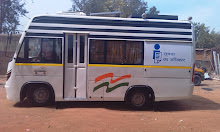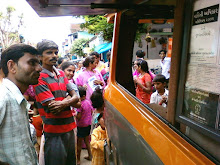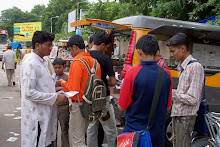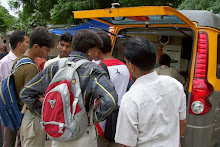The Wire: New Delhi: Monday, May 28, 2018.
An acute
problem facing Indian democracy today is the lack of credibility of government
data. For a landmass as vast and a population as widespread as ours with parts
of it so hard to access, we are more dependent on the government to report
accurately on the success and failures of its schemes than we realise.
Traditionally,
while facts stated by politicians in election speeches were taken with a pinch
of salt, data presented on the floor of parliament was generally regarded as
unimpeachable. The reasons for this include the fact that making a false
statement in parliament amounts to a breach of privilege and a motion for
breach of privilege can be brought against the person making such a statement.
‘Question Hour’ is a parliamentary convention followed across the Commonwealth
that we too have inherited, which is essential to ensuring accountability of
the government by allowing representatives of the people to ask questions of
the government concerning its functioning.
However, the
entire premise of this convention falls to the ground if representatives of the
government simply lie in response to questions asked of them by the people.
Let’s examine
this taking as a case in point this government’s defence of its policy of using
Aadhaar as a mandatory biometrics-based identification system for distribution
of benefits under its social welfare schemes.
On February
7, 2017, Prime Minister Narendra Modi, speaking in the Lok Sabha on the savings
attributable to the use of Aadhaar for identification of beneficiaries in the
Targeted Public Distribution System (TPDS), stated that “kareeb 4 Crore, yani 3
Crore 95 Lakh” (around 4 Crore, meaning 3 crore 95 lakh) fake ration cards have
been identified and deactivated using Aadhaar leading to savings of Rs 14,000
crore to the exchequer.
According to
custom, a transcript of this speech was uploaded on the Lok Sabha website as
part of the “uncorrected debates” (we’ll call this the ‘Original Text’).
Pursuant to
this speech in parliament, an RTI application was filed on March 7, 2017 by
‘right to food’ activists asking the Prime Minister’s Office (PMO) for the
basis of the figures presented by the prime minister in parliament, including a
state-wise break-up. It appears that when the actual exercise of fact-checking
was finally undertaken by the government pursuant to the RTI application, it
emerged that around two months ago, on November 22, 2016, the minister of
consumer affairs, food & public distribution, Ram Vilas Paswan, in reply to
a starred question in parliament had stated that 2.33 crore ration cards have
been deleted between 2013 and 2016 using Aadhaar.
A corrected
‘official’ transcript of the prime minister’s speech dated February 7, 2017 was
immediately uploaded, altered to match the figures previously given by Paswan.
The corrected
transcript was, however, altered with even less attention to detail than the
Original Text itself, and after the correction, it quoted the prime minister as
having stated that “kareeb 4 Crore yani 2 Crore 33 Lakh” (around 4 crore,
meaning 2 crore 33 lakh) fake ration cards have been identified and deactivated
using Aadhaar (let’s call this the ‘First Amendment’, because speech was never
more free).
When this
path-breaking new rule of rounding off discovered by our hon’ble prime minster
was brought to the notice of the Supreme Court during the course of arguments
in the constitutional challenge to the Aadhaar Act, the official transcript of
the debates of February 7, 2017 on the Lok Sabha website which contained this
faux paus was again “corrected” and now instead of “kareeb 4 Crore, yani 2 Crore
33 Lakh” simply reads “kareeb 2 Crore 33 Lakh” (let’s call this version
‘Nationalist History’).
This is just
another example of this government’s attitude towards history – if you manage
to alter the record, it didn’t happen. Thankfully, the internet never forgets.
The video footage of the actual speech made by the prime minister in Parliament
is still available on YouTube. Copies of the ‘Original Text’, as well as the
‘First Amendment’ version, were also placed before the Supreme Court and form
part of the record of the court.
While we are
at it, let’s have some more fun with numbers.
The UIDAI in
its counter affidavit filed before the Supreme Court had claimed that weeding
out duplicate and fake accounts in welfare programmes such as PDS, MNREGS, LPG
Pahal, old age pension, scholarships etc. during the last two years through the
use of Aadhaar has led to savings of approximately Rs 49,000 crore to the
exchequer.
At another
place in the same affidavit, the savings since 2014 was shown as 57,029 crore
with the following break-up: Direct Benefit Transfer of LPG subsidy under the
PAHAL Scheme: Rs 29,769 crore, PDS system: Rs 14,000 crore, MGNREGA: Rs 11,741
crore National Social Assistance Programme: Rs 399 crore and Other Schemes: Rs
1,120 crore.
An examination
of each of these individual numbers shows that this government has the same
disregard for judicial proceedings that it has for proceedings in parliament
and reveals the shocking irresponsibility with which these numbers are tossed
around.
Targeted
Public Distribution System
The RTI by
‘right to food’ activists mentioned above was transferred by the PMO to the
Department of Food & Public Distribution (DFPD). DFPD replied stating that
the state-wise break-up is already available on the DFPD website. For further
details beyond what was available on the website, DFPD transferred the RTI
application to the respective state/UT governments.
The only data
available on the website of DFPD is an excel sheet which provides figures of
bogus/ineligible rations cards deleted by the state/UT governments from July
2006 to February 2, 2016. This comes up to 6.26 crore. The figures provided in
the excel sheet have nothing to do with the RTI query since it starts from July
2006, i.e. the information given predates the conceptualisation of Aadhaar
itself by several years. Like a student giving a viva, the DFPD seems to have
adopted the tactic that no matter what the question is, I will reply with
whatever I studied last night. Perhaps, DFPD is following Prime Minister
Narendra Modi’s 16th mantra from his seminal work “Exam Warriors”, which states
– “Your Exam, Your Methods – Choose Your Own Style”.
The quantum
of savings attributable to Aadhaar is many times lower than what is being
claimed by the UIDAI. Credit: PTI
What the Modi
government lacks in the authenticity of data, it makes up in fecundity. A
state-wise list giving the break-up of ration cards deleted by each state/UT
had been presented by Ram Vilas Paswan along with his reply in parliament
mentioned above. This list also included ration cards deleted due to migration,
deaths etc which are unrelated to Aadhaar.
Meanwhile,
the RTI application, which had been transferred to all state/UT governments
under Section 6(3) of the RTI Act, 2005 on the ground that responsibility of
identification of eligible beneficiaries rests with the concerned state/UT
governments, yielded responses from the various state governments and UT
administrations that do not match the data provided by Paswan. In some cases,
the state governments responded to say that this data was not being maintained
by them, while in other instances, the figures provided differed wildly from
the data presented by Paswan.
Another RTI
application was filed with the PMO by the same querists on September 8, 2017
asking the PMO to provide the basis of the updated number of 2.33 crore fake
ration cards identified and deleted using Aadhaar supposedly mentioned by the
prime minister in the ‘Nationalist History’ version of his speech. This RTI
application was transferred by the PMO to the ministry of consumer affairs,
food and public distribution. The said ministry by its letter dated October 27,
2017 provided a state-wise break-up of ration cards deleted “due to detection
of ghost/fraudulent/duplicate/ineligible/migration/deaths, change in economic
status, etc. during the process of digitisation, de-duplication, Aadhaar
seeding in run-up and implementation of NFSA.”
It was also
stated that the data had been compiled as per information received from the states/
UTs. As if things were not bad enough, the figures provided in this reply do
not match any of the figures previously provided by anybody.
Pahal (Direct
Benefit Transfer of LPG) Scheme
On PAHAL
(Direct Benefit Transfer of LPG) scheme, the Comptroller and Auditor General of
India (CAG), the watchdog appointed by the constitution, examined the claims of
the Central government and arrived at the conclusion that the reduction in
payout of subsidy towards LPG was largely on account of the fall in crude oil
prices. Here’s an actual law of mathematics – if you keep the selling price
constant and the cost price keeps falling, you will save money.
The CAG
report concluded that keeping the price of crude (and therefore the rate of
subsidy) constant, the reduction in expenditure as an outcome of the PAHAL
(Direct Benefit Transfer of LPG) Scheme worked out to just Rs 1,763 crore (as
opposed to the Rs 29,769 crore claimed by the government).
The CAG’s
speculations about presumptive losses and gains that may or may not have
occurred if spectrum and coal had been auctioned were almost single-handedly
responsible for the fall of the last UPA government. And yet, the CAG catching
this government on its blatant lie about savings from the PAHAL scheme appears
to have escaped the notice of our primetime news anchors. To put it politely.
This government has long since realised that if you successfully manage to keep
something out of the primetime news, you can convince most people that it never
happened.
Mahatma
Gandhi National Rural Employment Guarantee Scheme
Pursuant to
claims made by UIDAI that 94 lakh “fake job cards” under MGNREGS had been
identified using Aadhaar and had been deleted, an RTI was filed asking for
state-wise details of deleted job cards in MGNREGS in FY 2016-17.
According to
the reply to the RTI query dated May 5, 2017 given by the ministry of rural
development, a large number of deleted job cards in the said period had been
deleted in the regular course on account of the family having shifted, job card
holder voluntarily surrendering the job card, error in the job card and other
reasons.
Further,
there was no data provided to indicate how the job cards deleted as “fake” or
“duplicate” or the card-holder being “Non-existent in Panchayat” had been
identified. No indication was given as to what measures had been taken to
ensure that actual eligible beneficiaries had not been excluded.
As is
evident, even assuming all “fake” and “duplicate” job cards were identified
through the use of Aadhaar (which claim itself has no basis), these account for
only 12.6% of the total of 94 lakh fake job cards claimed by the government to
have been deleted as a direct benefit of use of Aadhaar. So here too, the data
presented to the Supreme Court appears to be an attempt to mislead the court.
The upsho
The above
evidence suggests that the quantum of savings attributable to Aadhaar is many
times lower than what is being claimed by the UIDAI. The calculation of savings
itself is severely faulty as demonstrated above. Further, according to the
‘State of Aadhaar Report’ compiled by international researchers, whatever
percentage of “savings” remains after the exaggerations and lies have been
deducted would include money saved on account of exclusion of deserving people
who have been wrongly denied benefits under the various schemes. There is
simply no supporting data to justify the figures being presented by the
government.
Although the
government had a chance to respond to all these doubts and aspersions cast by
the PIL petitioners in their submissions to the Supreme Court on the
government’s claims, the attorney general and the additional solicitor general who
appeared for the government made no attempt to do so.
An official
of the UIDAI when asked informally about the source of some of the figures
presented before the Supreme Court said with a laugh that these statistics are
just sprinkled like chat masala over affidavits to add flavour. There seems to
be little regard for the fact that giving false information on an affidavit is
an offence punishable with seven years imprisonment under the IPC, and when
presented to a constitutional court also amounts to contempt of court.
The cavalier
manner in which facts and figures are thrown about in parliament and sprinkled
over affidavits filed before the highest court in our country reflects a waning
commitment to the “satya” that our national emblem promises will alone triumph.
It appears that in Modimatics, the rigour of evidence required to prove a
theorem before arriving at Q.E.D. is replaced by a shoot-from-the-hip attitude
best captured in the words of Amitabh Bachchan aka Jai in Sholay: “Partner ab
bol diya hai toh dekh lenge”.
Nizam Pasha
is a lawyer practicing in the Supreme Court and appeared for some of the PIL
petitioners in the Aadhaar matter. He can be contacted on Twitter @MNizamPasha.






























